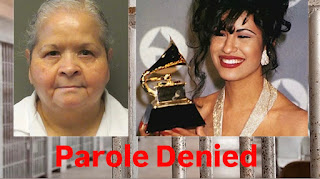Who Really Belongs on the Mount Rushmore of R&B? It’s Time We Have the Real Conversation
Every so often, social media gifts us a conversation so loud it echoes through group chats, comment sections, and barbershops alike. The latest? A fresh wave of AI-generated images carving out a Mount Rushmore of R&B — complete with the familiar faces of Chris Brown, Usher, R. Kelly, and Michael Jackson. It was meant to be a harmless nod to greatness. What it sparked instead was a necessary and overdue conversation about how we define, gatekeep, and honor Black music history.
Because truthfully — are we even having the right conversation?
The Mount Rushmore Obsession
The Mount Rushmore concept is pop culture’s favorite shortcut for naming the “greatest of all time.” It borrows from the iconic American monument where four presidents’ faces are etched in stone, immortalized for generations to see. In Black culture, we’ve adopted it as a quick way to settle debates about rap, sports, comedy, and of course — R&B.
But if there’s one thing this R&B debate reveals, it’s how complicated our relationship with genre, legacy, and nostalgia really is.
The Usual Names… And The Problem With Them
When you ask most folks to name their R&B Rushmore, certain names surface like clockwork: Usher, Chris Brown, R. Kelly. And then there’s the inclusion of Michael Jackson, a name that instantly triggers debate. While MJ’s talent, cultural impact, and catalog are unquestionable, there’s one glaring fact — he’s globally crowned as The King of Pop.
So the question stands: should he be on an R&B-only list?
One viral comment summed it up best:
“Michael is literally called the King of Pop. What he doing there?”
And it’s a valid critique. While Jackson’s early solo work and Jackson 5 days were rooted in R&B, his career trajectory exploded into pop superstardom in a way few Black artists ever have. Including him on an R&B Mount Rushmore raises bigger questions about how we label and claim Black artists — especially those whose success crossed racial and genre lines.
When Eras Collide
Another issue these AI images expose is how we attempt to bundle artists from vastly different eras into the same conversation. R&B is not — and has never been — a monolith. It has eras, sub-genres, and regional flavors that shaped its sound and meaning.
As one social media user aptly put it:
“You have to do each era.”
And they’re right. Comparing a Chris Brown to a Marvin Gaye or a Babyface is apples and oranges. Each artist’s impact is rooted in the context of their time — the sound, the culture, and the struggles of their era. Lumping them together flattens the genre’s rich, layered history and erases the contributions of the artists who paved the way long before the ‘90s and 2000s nostalgia wave.
Separating Art From The Artist
No R&B Mount Rushmore convo would be complete without addressing the most controversial inclusion: R. Kelly. There’s no denying his influence on modern R&B’s soundscape, but his documented history of abuse and criminal behavior has made his legacy too toxic for many to celebrate.
This debate forces us to confront a difficult question:
Can you separate the art from the artist?
And should cultural monuments, even hypothetical ones, reflect more than just record sales and chart success?
It’s a conversation that goes beyond music, touching on accountability, community responsibility, and what we’re willing to overlook in the name of nostalgia.
Genre Labels and The Limits of R&B
Another important thread in this conversation is about genre policing. What even is R&B in 2025? Is it the quiet storm ballads of the ’80s? The sex-fueled anthems of the 2000s? The moody, genre-bending sound of today’s alt-R&B wave?
One viral response put it plainly:
“Aren’t these pop artists? lol”
And that’s the issue. The lines between R&B, pop, soul, and hip-hop have always been blurred — especially for Black artists. What often happens is that once an artist crosses over to mainstream (read: white) audiences, they’re swiftly labeled “pop,” erasing their Black musical roots. It’s a tactic as old as Motown.
The truth is, R&B exists on a wide, genre-spanning spectrum. And conversations like this reveal how difficult it is to pin it down — which is a testament to the genre’s innovation and longevity.
Maybe We Need Multiple Mount Rushmores
At the end of the day, the real issue isn’t about who’s on the R&B Mount Rushmore. It’s that there shouldn’t be just one. Maybe we need a Mount Rushmore for each era. Or one for vocalists, one for producers, one for performers. R&B’s legacy is too layered, too global, and too important to squeeze onto a single mountain.
And maybe — just maybe — the real monument to R&B isn’t a carved rock, but the ongoing evolution of the sound itself. A genre born from Black expression, resistance, and love stories that continues to reinvent itself in every generation.
Final Word
The Mount Rushmore of R&B conversation isn’t just about music. It’s about how we choose to remember, honor, and tell the story of Black music history. It forces us to confront our nostalgia, our biases, and our blind spots.
So before you argue about whether Chris Brown or Luther Vandross belongs on the mountain, ask yourself what kind of history you want to carve in stone.







Comments
Post a Comment